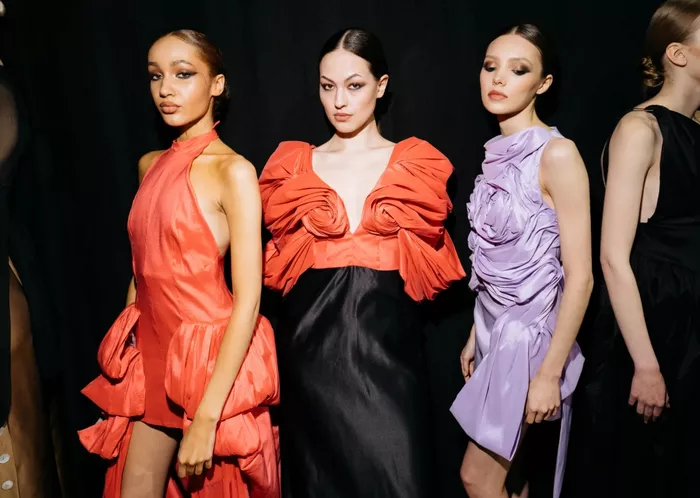After captivating audiences in London, New York, Milan, and Paris, the spotlight shifted to Moscow for Moscow Fashion Week, a renowned event that holds a distinctive place in the global fashion calendar. Known for celebrating innovative and unique styles from around the world, this year’s show included designers from Spain and the United States, alongside the event’s traditional roster of talent from India, Indonesia, China, South Africa, Armenia, and Turkey.
With a total of 90 shows, Moscow Fashion Week was marked by its inclusivity, highlighting the rich diversity within the fashion industry. The event featured an eclectic range of styles, with many designers drawing inspiration from their cultural heritage, national customs, and personal identities. The collections on display included tributes to traditional attire, artisanal craftsmanship, as well as nods to early 20th-century constructivism, bohemian flair, and sleek minimalism, creating a vibrant and diverse atmosphere.
Among the most striking presentations was Maison Suzanna Bars, which transported the audience to the hauntingly romantic Victorian era through a modern reinterpretation of Gothic aesthetics. Models graced the runway in luxurious gowns with regal hemlines and tightly cinched corsets, evoking the atmosphere of a mysterious Gothic castle. The intricate designs were adorned with delicate lace veils, voluminous cuffs, ornate buttons and collars, and grand bows and headpieces, all echoing the opulence and mystery of the Victorian period.
Lesia Lisun’s collection took a different approach, weaving historical references into its designs. With a deep exploration of the simple yet powerful striped print, Lisun’s pieces paid homage to the avant-garde artists of the early 20th century, injecting contemporary fashion with a sense of independence and boldness.
US designer Pia Lindsay made a statement with her exploration of contrasts in her latest collection at Moscow Fashion Week. Her designs skillfully paired menswear-inspired pinstripes for a commanding power suit with three-dimensional floral elements and intricate beading. The combination of these contrasting features demonstrated the designer’s expertise in fabric, structure, and design. Reflecting on the feedback from both international and Russian audiences, Lindsay noted, “The collection highlighted the femininity of the dresses and captured the enchanting essence of dressing up. It made me realize that fashion is shifting toward greater accessibility.”
Meanwhile, the brand Ogo Citizen explored themes of alienation in cross-cultural environments. Their collection incorporated upcycling techniques and unconventional material pairings, with elements like fluffy fibers resembling feathers, accent seams, and scuffing effects, all evoking a sense of disconnectedness in the modern world.
Moscow Fashion Week successfully showcased a diverse array of designers, each bringing their unique perspective to the global fashion stage.
Related Topics

